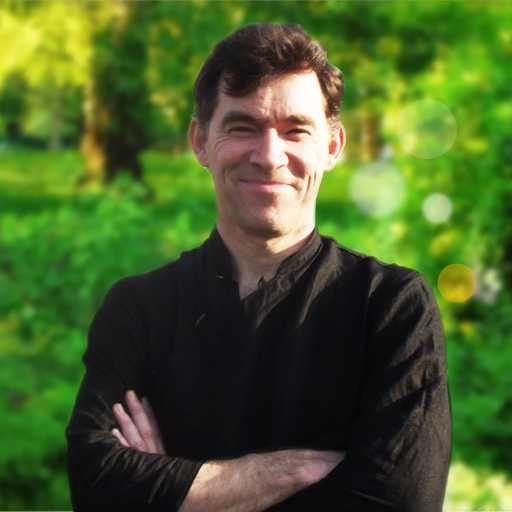Dr. Steve Taylor says Altered states of consciousness can affect our sense of identity, and our normal sense of separation between us and the world. He finds that Time also seems to pass slowly when we are bored or in pain. It seems to speed up when we’re in a state of absorption, such as when we play music or chess, paint, or dance. More generally, most people report that time seems to speed up as they get older.
In his book, he calls this phenomenon “Time Expansion Experiences or (TEEs)” – in which seconds can stretch out into minutes. The reasons why time can speed up and slow down are a bit of a mystery. Some researchers, including me, think that mild variations in time perception are linked to information processing.
Dr. Steve Taylor is a British psychologist, author, and academic specializing in Consciousness Studies, Spirituality, Positive Psychology, and Transpersonal Psychology. He teaches courses in Social Psychology and Interdisciplinary Psychology. He has published 14 books, including Waking From Sleep, The Leap, and Extraordinary Awakenings, many of which are best-sellers focused on psychology and spirituality.
Taylor’s research has been featured in major academic journals, including The Journal of Humanistic Psychology and The Journal of Consciousness Studies, as well as in popular media outlets such as The Daily Mail, The Guardian, and BBC radio and TV channels. He is a member of the British Psychological Society and was the past chair of its Transpersonal Psychology section.

Dr. Steve Taylor explains that TEEs are moments in which time seems to slow down dramatically, allowing a person to think and act with extraordinary clarity. These experiences often occur during high-stress or emergency situations, such as car crashes, falls, or attacks. (Source)
According to Dr. Taylor’s research, about 85 percent of people have experienced at least one TEE. Around half of these events happen during accidents or emergencies, where individuals feel that the expansion of time allowed them to make decisions or take actions that might have otherwise been impossible, potentially saving them from injury or death.
One example Dr. Taylor mentions is a woman who experienced a TEE when a metal barrier nearly fell onto her car. During the event, time seemed to slow, enabling her to decide how to escape.
TEEs can also be experienced in sporting events, as one participant shared an experience in ice hockey where an action that normally lasted seconds felt like ten minutes. Additionally, these experiences can occur in moments of stillness, such as during meditation or in natural settings, when a person feels deeply present and aware of the passage of time.
Dr. Steve Taylor discusses TEEs are often reported under extreme conditions, such as during psychedelic experiences with substances like LSD or ayahuasca. He shares a specific instance where a person using LSD felt the seconds on their stopwatch stretch, indicating intense time dilation.
Dr. Taylor then explores various theories about why these TEEs happen. He dismisses the idea that they are linked to the release of noradrenaline, a hormone that usually occurs during emergencies and is associated with the “fight or flight” response. This doesn’t explain the calm, relaxed feelings many people report during Tees, even in dangerous situations.
He also rejects the theory that TEEs are purely an evolutionary adaptation to help ancient humans survive emergencies by slowing down time. According to Taylor, this theory doesn’t account for TEEs experienced in peaceful situations, such as deep meditation or being one with nature.
Another idea Dr. Taylor considers is that TEEs could be illusions of recollection. In emergencies, he theorizes, heightened awareness could cause people to take in more information, creating the illusion that time was expanding when it wasn’t. However, many people who have experienced Tees are certain they had more time to think and act, leading Taylor to question this theory.
In a recent unpublished poll, Dr. Taylor found that most people who had experienced TEEs believed them to be real moments in the present, rather than illusions of memory. Only 3 percent thought the experience was illusory, with the vast majority believing it was an actual event.
In terms of timelessness, there may be a strong sense that linear time is an illusion. For example, one person who had an NDE after being electrocuted described an awareness of “The conventional distortion is the construct of a ‘past’, a ‘now’, and a ‘future’… At the earliest level of my NDE journey that human construct fell away, that arrow of time.”
In “Dying: A Transition,” Monika Renz also suggested that the process of dying – even without the phenomenology of the NDE – can feature a sense of timelessness.
In her studies of the experiences of the dying, she has identified three stages of the process: pre-transition, transition, and post-transition. In the posttransition phase, the dying person lets go of fear, accepts death, and experiences a state of ego-transcendence and tranquility. As Renz has described it, this stage “sometimes lasts no more than a few minutes, at her times perhaps hours, in some rare cases days, there is an utterly different atmosphere, a state beyond time, space and body… This makes such moments seem eternal.”
Dr. Steve Taylor suggests that the key to understanding certain experiences, like those involved in trauma or intense activities, lies in altered states of consciousness.
Read also:
- This Man from MIT Said the Brain Is Like Logic Gates, and God’s Ideas Are Mathematical Logic
- Scientist found People Born Blind Are Mysteriously Protected From Schizophrenia
- This Man Proved Time Is an Illusion: He Spent 6 Months in an Underground Cave and Adjusted to a 48-Hour Sleep Cycle
He explains that incidents like accidents disrupt normal psychological processes, leading to a sudden shift in consciousness. In sports, he introduces the concept of “super-absorption,” where a person becomes deeply absorbed in an activity, causing time to slow down instead of speeding up. This phenomenon occurs when concentration is sustained over an extended period.
Altered states, according to Dr. Taylor, also influence our sense of identity and the separation between us and the world around us. He references psychologist Marc Wittmann’s observation that our sense of time is closely linked to our sense of self.
Normally, we experience the world as external to our mind, but during intense altered states, the boundaries between our inner self and the external world dissolve. As a result, we feel more connected to our surroundings, and our sense of time becomes more fluid, allowing us to slip into a different time world.
Dr. Taylor suggests that “our normal experience of fast-flowing linear time is merely a psychological construct, and even illusory in nature.”
He references Kant’s theory, which suggests that time is not a fundamental property of the external world, but instead a mental framework that our mind uses to impose structure on our experiences. Taylor also connects this idea to certain physics theories, particularly those proposed by Roger Penrose, who argues that our perception of time as linear is similar to our understanding of space—both are constructs we use to organize events in the universe.
According to Dr. Taylor, the experience of linear time may be tied to the dualistic way we view reality, where a clear distinction exists between “self” and “other.” As this sense of duality diminishes, time itself may appear to slow down, as is often described in “time-expansion experiences” (TEEs) during accidents or emergencies.
In some extraordinary states, like mystical experiences, near-death experiences (NDEs), or psychedelic journeys, where the self is no longer separate from the world, linear time may entirely fade away. Taylor’s theory suggests that as the boundaries of the self dissolve, so too does our sense of time, emphasizing that time is a construct linked to our usual self-concept, disappearing when the self-concept weakens.









